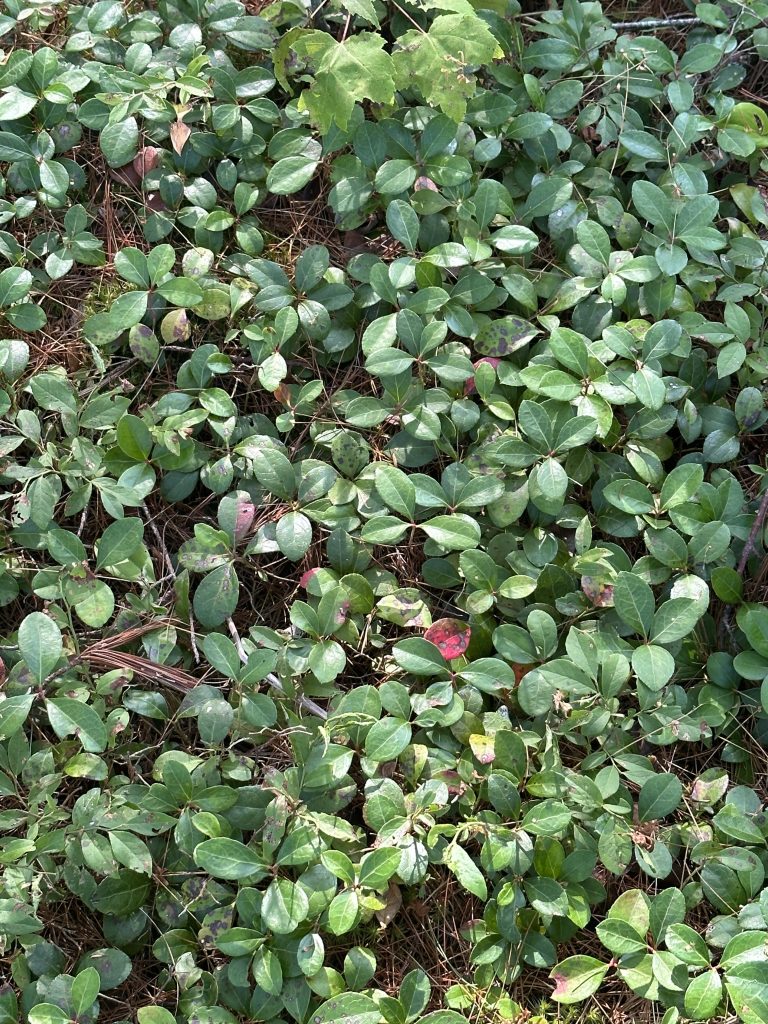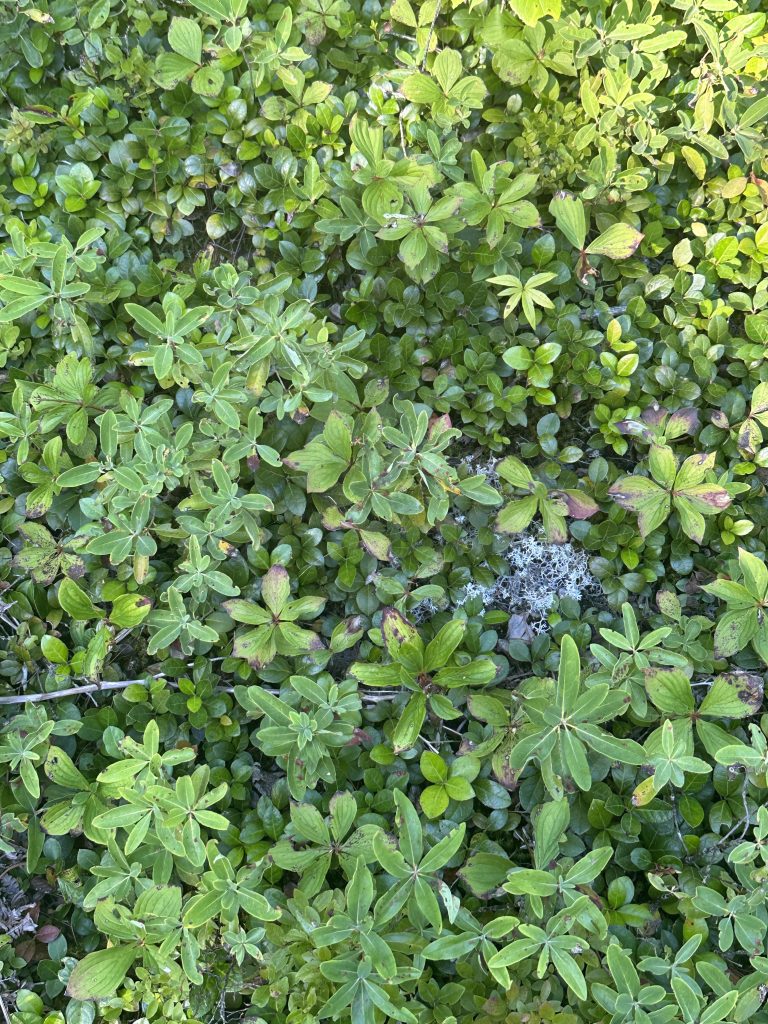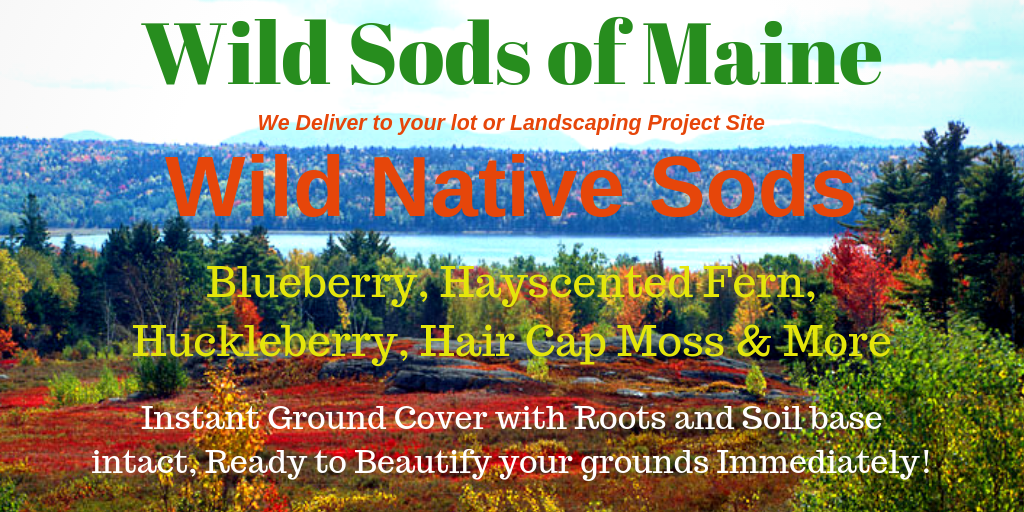Wintergreen Sod for Landscaping

Introduction
Wintergreen plants (Gaultheria procumbens) have become a popular choice in modern landscaping. These versatile groundcover plants are an ideal solution for difficult garden areas, especially in shaded spots where many other plants struggle to grow.
Why Wintergreen Plants Are Appealing
The appeal of wintergreen plants lies in their remarkable characteristics:
- Year-round foliage: Dense mats of glossy green leaves maintain their vibrancy throughout all seasons
- Shade tolerance: Exceptional performance in areas with limited sunlight
- Low maintenance: Minimal care requirements once established
- Natural beauty: Delicate white flowers in summer followed by bright red berries
- Compact growth: Perfect for small spaces and understory planting
Benefits of Using Wintergreen Plants
You’ll find wintergreen plants particularly valuable in areas where traditional grass struggles to grow. Their ability to spread and form thick ground coverage helps prevent soil erosion while suppressing weed growth. The plants’ natural adaptability to woodland conditions makes them an excellent choice for creating naturalistic garden designs that require minimal intervention.
Understanding Wintergreen Plants
Gaultheria procumbens, commonly known as wintergreen, is a member of the Ericaceae family, which includes blueberries and rhododendrons. This native North American plant thrives naturally in the eastern regions, from Newfoundland to Georgia, nestled within the understory of pine and hardwood forests.
Growth Characteristics
Wintergreen has a unique growth pattern that allows it to spread and create a dense ground cover. Here are some key characteristics of this plant:
- Height: 4-8 inches tall
- Spread: 6-12 inches wide
- Growth Rate: Slow to moderate
Foliage and Seasonal Changes
The leaves of wintergreen undergo remarkable transformations throughout the year. Here are the different stages of foliage color:
- Spring/Summer: Deep green, glossy leaves
- Fall: Rich burgundy undertones emerge
- Winter: Reddish-bronze hues develop
- Year-round: Leaves retain their waxy texture
Each leaf contains aromatic compounds that release the characteristic wintergreen scent when crushed. The plant’s low-growing nature and spreading make it an ideal choice for creating uniform ground coverage in shaded landscapes.
The Charm of Wintergreen Flowers and Berries
Wintergreen plants bring beauty to your garden with their delicate bell-shaped flowers in the summer. These small, drooping blooms grow in clusters, creating a subtle yet captivating display against the shiny green leaves. The white to pale pink flowers are about 1/4 inch long and attract important pollinators to your garden:
- Bumblebees
- Native bees
- Butterflies
- Moths
The Magic of Wintergreen Plants
The real wonder happens when summer turns into fall. Each flower that gets pollinated becomes a bright red berry, roughly 1/3 inch wide. These berries stay on the plant throughout winter, providing a striking visual contrast against:
- Snow-covered landscapes
- Winter-bronzed foliage
- Rock garden features
- Woodland settings
Edible Delights
As an edible plant, wintergreen berries offer a unique flavor experience. The berries contain methyl salicylate, which gives them the familiar wintergreen taste found in candies and chewing gum. While safe to eat, the berries have a strong minty-medicinal flavor that is best enjoyed in small amounts. Wildlife especially loves these hardy fruits during harsh winter months, making wintergreen a valuable addition to natural garden designs.
Year-Round Appeal
The combination of summer flowers and winter berries ensures that your landscape remains visually interesting throughout different seasons. Birds often visit wintergreen areas, bringing movement and life to winter gardens when other plants are inactive.
Optimal Growing Conditions for Wintergreen Plants
Wintergreen plants thrive in specific environmental conditions that mirror their native woodland habitat. These hardy perennials grow best in USDA hardiness zones 3 to 7, making them perfect for cooler regions across North America.
Soil Requirements for Wintergreen Plants
Wintergreen plants have specific soil requirements to grow successfully. Here are the key factors to consider:
- pH levels between 4.5 and 6.0 (acidic soil)
- Rich in organic matter
- Well-draining to prevent root rot
- Consistently moist but not waterlogged
Ideal Light Exposure for Wintergreen Plants
The right light exposure plays a crucial role in wintergreen plant success. These shade-loving plants perform best in:
- Full shade to partial shade
- Morning sun with afternoon shade
- Filtered light through tree canopies
- Protection from harsh afternoon sunlight
Temperature Preferences of Wintergreen Plants
Creating the ideal growing environment requires attention to temperature. Wintergreen plants prefer:
- Cool summer temperatures
- Protection from hot, dry winds
- Winter temperatures as low as -30°F
- Consistent soil temperature through mulching
Mimicking Natural Habitat for Wintergreen Plants
Your wintergreen plants need a location that mimics their natural forest floor habitat. Adding a 2-3 inch layer of pine needles or oak leaf mulch helps maintain soil acidity and moisture levels while protecting roots from temperature fluctuations. A spot under deciduous trees or on the north side of buildings provides the perfect balance of light and shade these plants need to flourish.
Caring for Your Wintergreen Plants: Watering, Maintenance Needs, and Pest Resistance
Wintergreen plants thrive with a low-maintenance care routine that focuses on consistent moisture levels. You’ll need to water your plants deeply during dry spells, ensuring the soil remains damp but not waterlogged. A 2-inch layer of organic mulch helps retain soil moisture and regulates temperature.
Watering Guidelines:
- Water when top 1-inch of soil feels dry
- Provide 1-inch of water per week in absence of rain
- Reduce watering during winter dormancy
- Avoid overhead watering to prevent leaf diseases
These resilient plants rarely need fertilization – their natural adaptation to nutrient-poor soils means they can flourish without supplemental feeding. If you choose to fertilize, apply a light dose of acid-loving plant fertilizer in early spring.
The natural aromatic oils in wintergreen foliage create a built-in pest defense system. Common garden pests like deer, rabbits, and insects typically avoid these plants. While wintergreens demonstrate strong disease resistance, they can develop leaf spots in overly wet conditions.
Pest-Free Maintenance Tips:
- Remove dead leaves in early spring
- Maintain good air circulation between plants
- Check periodically for signs of rust disease
- Prune damaged stems as needed
Your wintergreen plants will reward minimal care efforts with year-round beauty and persistent growth. Their natural resistance to pests and diseases makes them an excellent choice for busy gardeners seeking reliable groundcover options.
Incorporating Wintergreen Plants into Your Landscaping Design
Wintergreen plants create a stunning visual impact when strategically placed in your landscape design. These versatile groundcovers shine in several key areas:
1. Foundation Plantings
- Plant wintergreens 12-18 inches apart along house foundations
- Create a lush, evergreen border that softens architectural lines
- Use as a transition between lawn areas and building structures
2. Pathway Enhancement
- Line garden paths with wintergreen to define walking routes
- Plant between steppingstones for a natural, woodland feel
- Create meandering borders that guide visitors through your garden
3. Creative Design Applications
- Fill shady corners where grass struggles to grow
- Create living mulch under acid-loving shrubs and trees
- Design flowing carpet effects in woodland garden sections
The low-growing nature of wintergreen makes it perfect for slopes and terraced areas, preventing soil erosion while adding year-round interest. Its dense growth pattern naturally suppresses weeds, reducing maintenance needs in hard-to-reach spots around your landscape.
Enhancing Woodland Gardens and Rock Gardens with Wintergreen Plants
Wintergreen plants create stunning visual displays in woodland gardens by forming lush, emerald carpets beneath towering trees. Their glossy leaves reflect dappled sunlight, adding depth and dimension to shaded areas. You’ll find these versatile plants thriving alongside:
- Ferns
- Wild ginger
- Foam flowers
- Native violets
- Japanese forest grass
The natural spreading habit of wintergreen creates seamless transitions between different garden zones while suppressing weed growth. Its deep green foliage provides a striking backdrop for spring ephemeral wildflowers and complements the delicate textures of moss gardens.
In rock gardens, wintergreen plants soften hard edges and cascade gracefully over stone surfaces. Their compact growth pattern makes them ideal for:
- Filling spaces between rocks
- Creating living mulch around larger specimens
- Draping over retaining walls
- Defining garden pathways
- Adding year-round structure to alpine plantings
The plant’s seasonal color changes bring dynamic interest to rock gardens – bright green leaves transform into rich burgundy hues during winter months. Small white flowers dot the foliage in summer, while red berries persist through winter, creating striking contrasts against stone elements and snow.
Year-Round Appeal: The Aesthetic Value of Wintergreen in Landscaping Design
Wintergreen plants can make your outdoor space look beautiful all year round, regardless of the changing seasons. In spring and summer, their shiny green leaves create a lush carpet beneath taller plants. When autumn comes, the leaves turn into deep burgundy shades, adding richness to your garden’s colors.
The Beauty of Wintergreen in Every Season
The real beauty of wintergreen shows itself during the coldest months. While other plants go into hibernation, wintergreen stays strong:
- Winter Foliage: The leaves keep their shape and structure, preventing bare spots in your garden design
- Color Evolution: Dark green leaves develop bronze-purple hues, bringing warmth to winter landscapes
- Berry Display: Bright red berries stay visible through snow, creating a striking contrast against white winter backgrounds
- Textural Interest: The plant’s thick growth pattern adds dimension when seen against frost or snow
You’ll love how wintergreen can tie together your garden designs throughout the year. Its constant presence helps maintain structure in mixed borders and foundation plantings. The plant’s compact growth habit creates reliable visual boundaries that remain clear no matter what the weather is like.
Conclusion: Embracing Eco-Friendly Landscaping Solutions with Wintergreens!
Wintergreen plants are a great example of sustainable landscaping practices. These hardy plants provide numerous environmental advantages:
- Natural Erosion Control: Their dense root systems help stabilize soil on slopes and prevent soil loss.
- Wildlife Support: The berries provide essential winter food for birds and small mammals.
- Low Resource Requirements: Minimal water and fertilizer needs reduce environmental impact.
- Native Species Benefits: Supporting local ecosystems and biodiversity.
When you choose to include wintergreens in your landscape design, you’re doing more than just making it look nice. You’re actively supporting local wildlife, minimizing maintenance efforts, and helping to protect the environment.
The year-round beauty of wintergreen plants, along with their contribution to sustainable landscaping, makes them a perfect choice for gardeners who care about the environment. By selecting wintergreens, you’re not only creating a beautiful garden – you’re also establishing a sustainable habitat that benefits both your outdoor space and the surrounding ecosystem.
Make the switch to eco-friendly landscaping by incorporating wintergreen plants into your design. Your garden will reward you with lasting beauty and positive environmental impact for many years ahead.

